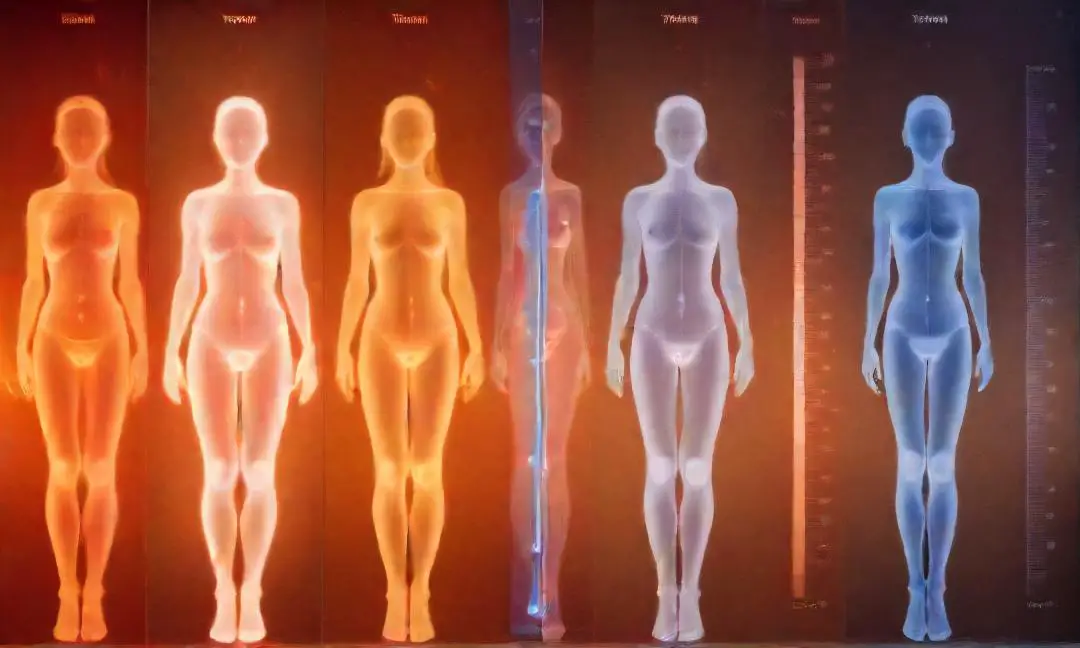
The Impact of Temperature on Your Body’s Functions
1. Temperature Regulation Mechanisms in the Body
Our bodies are equipped with intricate systems that work tirelessly to maintain an optimal internal temperature. When external temperatures fluctuate, our thermoregulatory mechanisms kick into high gear to ensure our body stays within a narrow temperature range.
2. The Role of Thermoregulation in Maintaining Homeostasis
Thermoregulation plays a crucial role in maintaining a state of equilibrium within the body, known as homeostasis. By adjusting processes such as sweating or shivering, our body strives to keep its core temperature stable, allowing essential functions to continue uninterrupted.
3. Effects of Extreme Temperatures on Body Functions
Extreme temperatures can have profound effects on our body’s functions. In scorching heat, heat exhaustion or heat stroke may occur, disrupting vital processes. Conversely, in freezing cold, frostbite can damage tissues and impair circulation, impacting overall health.
4. Ways to Support Your Body in Adapting to Temperature Changes
Adapting to temperature changes requires proactive measures to assist our body’s natural resilience. Dressing appropriately for the weather, staying hydrated, and seeking shelter in extreme conditions are simple yet effective ways to support our body in adjusting to varying temperatures.
5. Importance of Proper Hydration in Temperature Management
Proper hydration is key to temperature management as it aids in regulating body temperature, facilitating the cooling process through perspiration. By ensuring adequate fluid intake, you can help your body function optimally and maintain balance even in challenging thermal conditions.
Heat vs. Cold: How Different Temperatures Affect Your Health
Physiological Responses to Heat and Cold
Our bodies are remarkable thermoregulators, adapting swiftly to extreme temperatures. When exposed to heat, blood vessels dilate to release heat, whilst in cold conditions, they constrict to conserve warmth. These responses are vital for maintaining our core body temperature within a narrow range.
Risks of Heat Stress and Hypothermia
Extreme heat can lead to heat exhaustion or heatstroke, causing symptoms like dizziness and dehydration. Notwithstanding, prolonged exposure to cold can result in hypothermia, where the body loses heat faster than it can produce it, leading to shivering and confusion.
Tips for Staying Safe in Hot and Cold Environments
Whether it’s scorching heat or icy cold, it’s crucial to dress appropriately, stay hydrated, and seek shelter when necessary. In hot weather, wear light-colored, loose clothing, and in cold conditions, layer up and cover exposed skin to prevent frostbite.
Benefits of Heat Therapy and Cold Therapy for Health
Heat therapy, like using heating pads or warm baths, can help relax muscles, improve circulation, and alleviate pain. Conversely, cold therapy, such as ice packs or cold baths, can reduce inflammation, numb sore areas, and aid in recovery after intense physical activity.
Balancing Exposure to Heat and Cold for Optimal Well-Being
Finding the right balance between heat and cold exposure is key to promoting overall health. Alternating between heat and cold therapies can boost circulation, reduce muscle tension, and augment recovery. Remember, moderation is key to reaping the benefits of both temperature extremes.
Seasonal Changes and Their Impact on Your Body
How Seasonal Variations Affect Mood and Energy Levels
Just like the changing seasons, our moods and energy levels can also experience fluctuations. When the cold winter winds blow, it’s common to feel a bit down. The lack of sunlight can leave us feeling a bit gloomy and sluggish. On the flip side, the warmth of summer can bring a burst of energy and positivity, lifting our spirits.
Adjusting Your Diet and Exercise Routine to Seasonal Shifts
As the seasons change, so should our approach to diet and exercise. In the winter, hearty soups and stews can provide comfort and warmth, at the same time in the summer, fresh salads and fruits can keep us cool and refreshed. Similarly, outdoor activities like skiing in the winter and swimming in the summer can help us stay active and healthy year-round.
Managing Seasonal Allergies and Immune Health
Seasonal allergies can wreak havoc on our immune system, making us feel miserable. By taking proactive steps such as keeping windows closed during peak pollen times and using air purifiers, we can minimize the impact of allergies on our health. Supporting our immune system with a balanced diet rich in vitamins and minerals can also help us stay strong and resilient.
Importance of Sunlight Exposure for Vitamin D Production
Sunlight is not just a source of warmth and light; it’s also essential for our body’s production of vitamin D. During the darker winter months, getting enough sunlight exposure can be challenging. Although, even a short daily walk outside can help boost your vitamin D levels and support overall health.
Strategies for Coping with Seasonal Affective Disorder (SAD)
Seasonal Affective Disorder (SAD) is a type of depression that occurs at a specific time of year, usually in the winter. To combat SAD, light therapy, regular exercise, and spending time outdoors can be beneficial. Seeking support from loved ones and healthcare professionals is also crucial in managing this condition effectively.

Thermogenesis: How Your Body Burns Calories to Generate Heat
Picture your body as a furnace, constantly burning fuel to produce heat. This process, known as thermogenesis, plays a crucial role in calorie expenditure.
Effects of Cold Exposure on Metabolic Rate and Weight Loss
When faced with chilly conditions, your body revs up its metabolic rate to generate warmth, potentially aiding in weight loss efforts.
Impact of Heat Stress on Metabolism and Energy Expenditure
Conversely, when dealing with heat stress, your metabolism may shift gears to cope with the increased energy demands, affecting your overall energy expenditure.
Encompassing Thermogenic Foods and Beverages in Your Diet
Think of thermogenic foods and drinks as allies in your quest for a balanced metabolism. These items can give your body a little metabolic boost.
Balancing Temperature Influences on Metabolism for Overall Health
Striking a harmony between temperature influences is key to maintaining a healthy metabolism. Your body functions best when the temperature is just right.
Enhancing Recovery Through Temperature Management
Using Heat and Cold Therapies for Muscle Recovery
Temperature plays a crucial role in muscle recovery. Alternating between heat and cold therapies can significantly aid in reducing muscle soreness and promoting faster healing.
Benefits of Contrast Therapy in Reducing Inflammation and Pain
Contrast therapy, involving the use of both hot and cold treatments, is highly effective in reducing inflammation and alleviating pain. The alternating temperatures help improve blood circulation, accelerating the healing process.
Enmeshing Saunas and Ice Baths in Your Recovery Routine
Integrating saunas and ice baths into your recovery routine can provide immense benefits. Saunas help relax muscles and improve circulation, in the course of ice baths reduce inflammation and numb soreness, offering a refreshing recovery experience.
Timing and Duration Guidelines for Temperature-Based Recovery Methods
It’s essential to follow specific timing and duration guidelines when utilizing temperature-based recovery methods. Optimal results are achieved by adhering to recommended time frames for heat and cold therapies, ensuring maximum effectiveness in muscle recovery.
Listening to Your Body’s Signals During the Recovery Process
Your body communicates its needs during the recovery process. Paying attention to signals such as increased flexibility, reduced pain, and improved energy levels can guide you in adjusting temperature management strategies to optimize recovery outcomes.
How does temperature influence body functions
Temperature plays a profound role in influencing various body functions. From regulating metabolism to affecting circulation and muscle performance, maintaining an optimal temperature balance is crucial for overall well-being and efficient recovery.

Sustainable Practices for Environmental and Personal Temperature Control
1. Energy-Efficient Ways to Regulate Indoor Temperature
Maximize your home’s insulation to trap heat in the winter and keep it cool in the summer. Seal any drafts around windows and doors to prevent energy loss.
Invest in a programmable thermostat to adjust temperatures based on your schedule, saving energy when you’re away or asleep.
2. Eco-Friendly Cooling and Heating Alternatives for Home and Workspaces
Consider installing a geothermal heat pump for efficient heating and cooling by harnessing the Earth’s natural temperature. This sustainable solution reduces energy consumption and carbon emissions.
3. Personal Habits to Reduce Energy Consumption and Carbon Footprint
Opt for natural ventilation by opening windows to let in fresh air instead of relying solely on air conditioning. This simple habit reduces energy usage and promotes a healthier indoor environment.
Use energy-efficient appliances and lighting to lower your electricity consumption and minimize your carbon footprint. Small changes can lead to significant environmental benefits.
4. Benefits of Dressing Appropriately for the Weather to Conserve Energy
Layer clothing in colder months to retain body heat and reduce the need for constant heating. Dressing warmly allows you to lower your thermostat without compromising comfort.
In warmer weather, choose breathable fabrics and light colors to stay cool naturally, reducing the reliance on air conditioning and energy-intensive cooling methods.
5. Creating a Comfortable and Sustainable Environment Through Temperature Awareness
Monitor indoor temperatures to adjust settings based on your comfort level and energy efficiency goals. Being mindful of temperature changes can lead to a more sustainable living or working environment.
Utilize natural light and shading techniques to regulate temperatures without relying on artificial heating or cooling. By harnessing natural elements, you can create a comfortable space at the same time reducing energy consumption.
